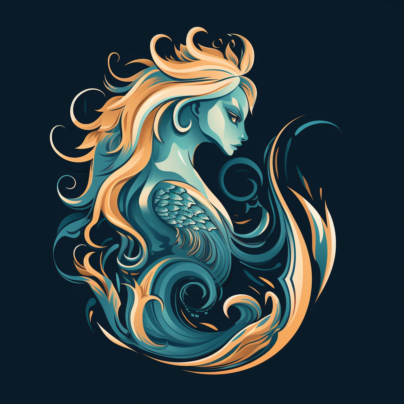The Age of Awakening
“A world once ruled by water begins to stir with the first whispers of life on land.”
Eon XXVI – Age of Colonization
“The seas teem with life while the first brave spores and invertebrates edge onto the barren shores.”
In the shadows of shifting tides, the Aboleths—ancient architects of fear—slid into deeper abysses, their whispers fading from the light. Though their influence once shaped entire ecosystems, their hold loosened as strange new predators emerged, immune to suggestion and blind to psionic manipulation. Bioluminescent Flumphs began pulsing through the shallows, their gentle luminescence washing the waters in soft warmth and scattering the ancient mists into once-safe shadows. Their silent glow dispersed the psychic mists the Aboleths had cloaked themselves in, unraveling ancient control. With their dominion broken and their prey evolving beyond fear, the Aboleths retreated—not slain, but eclipsed, their reign quietly ending beneath the rising tide of change.
Fish—the first vertebrates—glided through labyrinths of reef, their instincts subtly sculpted by psionic tides left behind by the Elder Things, like ripples shifting the dreams of the deep.
Once the world was ruled by water. Coral-like reefs rose like grand citadels across the shallows, their arches of shell and bone sheltering countless wonders. Fish—the first vertebrates—glided through labyrinths of reef, their instincts subtly sculpted by psionic tides left behind by the Elder Things, like ripples shifting the dreams of the deep.
Beneath the surface, Trilobites—armored and many-eyed—scuttled in great hordes, grazing on microbial mats. Nautiloids drifted like living banners, tentacles trailing in the currents. Eurypterids, both Bluetip and monstrous kin, prowled reef edges with jointed limbs and spiny tails. In sunless trenches, the glowing Anglerfish cast eerie lures, while the abyssal Bloop lurked in liquid shadows.
Along the flooding shores, spores rode the tides on humid gusts of air, leaving the scent of damp rot and the sticky touch of slime on every stone they touched. Fungal threads wove through rock fissures, and slime trails crept across stone. Tiny crawlers—soft-bodied pioneers—emerged: early gastropods leaving spiral shells, worms burrowing for sustenance, and even colossal snails whispered of mythic form. Assassin Vines sprang from fungal carpets, grappling unwary prey in silent ambush.
It was a conquest of persistence, not arms—a quiet triumph over barren stone. The stillness of fungal groves belied a deeper echo: faint, forgotten shrieks from the Age of Hunters, now silenced beneath mats of moss and the soft breath of spores. In this hushed colonization, the memory of old carnage lingered only as shadow and soil. Mossy mats, lichen veils, and creeping oozes painted the land in ghostly hues. Fungal groves clung to cave mouths, exhaling spores into wind-whipped canyons. Life fed life in quiet communion.
Thus began the world’s first foothold upon stone. The sea still ruled, but the land had been touched—and it would never be the same.
Eon XXVII – Age of Fungus
“Towering fungal forests cloak the continents in a spore-choked wilderness.”
In an era before the rise of trees or the hum of insects, fungi held dominion over the land. Vast fungal forests, with towering prototaxites stretching over 30 feet into the air, cast eerie shadows across a world still adjusting to its new form. These ancient organisms thrived in the damp, low-light environments, their veined caps spewing glowing spores that illuminated the fungal wilderness in a faint, otherworldly light.
The land was ruled by vast, sprawling mycelial networks beneath the soil, connecting everything in an intricate web. The myconids, sentient beings of living fungus, grew among these fungal forests. They were strange and enigmatic, with bulbous, spore-covered heads that constantly emitted soft clouds of spores.
These myconids communicated through the exchange of spores, creating a shared consciousness across vast stretches of land. They lived in harmony with their environment, cultivating the fungi around them while maintaining an ancient, mystical bond with the land. Their fungal colonies sprawled like small cities, each mushroom-shaped spire sheltering communities of these myconid people, with intricate underground tunnels connecting them all.
Above ground, strange and primordial creatures began to take root—elemental entities drawn to the ley energies pulsing through the earth’s crust. These beings, perhaps more ancient than the world itself, were bound to the land’s energies and embedded themselves within the living soil, their forms often indistinguishable from the fungal masses that grew alongside them.
The land was still a harsh, fungal wilderness, but life was taking root in ways never before seen. Small arthropods began their slow migration from the water’s edge, scuttling between massive stalks of fungus, evolving in strange, forgotten ways. In this dark, humid world, life was beginning to shape itself into something far more complex, setting the stage for the great explosion of life to come.
Eon XXVIII – Age of Fishes and Forests
“Forests take root and the seas erupt with armored leviathans and swift finned predators.”
The world of Eon XXVIII was one of transformation—continents that had long been barren were now teeming with the first true vascular plants. Early trees, ferns, and creeping vines unfurled their leaves along the tangled banks of rivers and lakes, creating thick, verdant canopies that stretched over the land. The forests of this era were young and wild, their roots digging deep into the soil, binding the earth together in ways never seen before. Alongside these towering plants, mosses and liverworts carpeted the forest floor, creating an ecosystem brimming with life yet still in its infancy.
In these primordial woodlands, plant-based lifeforms began to take on forms both strange and wondrous. The Trillium, a mysterious flowering plant capable of exuding potent, magical spores, began to populate the damp forest floor. The Vegepygmies, plant-like creatures with a symbiotic connection to fungi, emerged in the shadows, forging their first primitive communities. Their growth and behavior were shaped by the powerful elemental forces of the land, and they began to interact with the world around them in ways both harmonious and dangerous.
Above ground, the forests were alive with dangerous, carnivorous plants. Among them were the Assassin Vines, creeping and coiling their long tendrils over the underbrush. These deadly plants could snap out with terrifying speed to ensnare prey, drawing it into the suffocating embrace of their vines, where they would drain the life force from their unfortunate victims. These plants were not passive elements of nature, but active predators of the forest, making their home among the dense undergrowth and towering trees, adding an extra layer of peril to the already dangerous wilderness.
As life flourished on land, the oceans were a chaotic battlefield. The arms race of aquatic predators was in full swing, with fierce armored leviathans like the terrifying Dunkleosteus clashing with swift, sleek cephalopods and the earliest sharks. These ancient predators were clad in armor or razor-sharp teeth, honed for an unforgiving world where survival was the only law. The oceans roiled with these primordial creatures, their battles leaving deep marks on the landscape of the seas.
But it was not only beneath the waves where life was evolving. On the land, a new kind of life was emerging—creatures caught between two worlds. Amphibious life, drawn from the waters and drawn to the promise of the terrestrial realm, began to stir. New forms of life, neither fully fish nor fully land-dwelling, began to explore the borders of the swampy edges of the rivers.
These ancient beings, with lungs and gills, fins and feet, began their slow migration into the terrestrial world. It was here, in the druidic groves and along the still-wet shores, that whispered tales began to spread of the first creatures taking tentative steps onto solid ground, hinting at the great leap forward that would one day lead to the vast kingdoms of animals that would rule the land.
The world of Eon XXVIII was thus one of primal growth—where the forests took root, teeming with magical and sentient plant life, and the seas churned with the birth of predators and pioneers alike. The land was in a constant state of flux, brimming with strange new forms, both in the deep oceans and on the newly sprouting shores, where life in all its forms was beginning to take shape in bold, unexpected ways.

 Buy me a coffee
Buy me a coffee